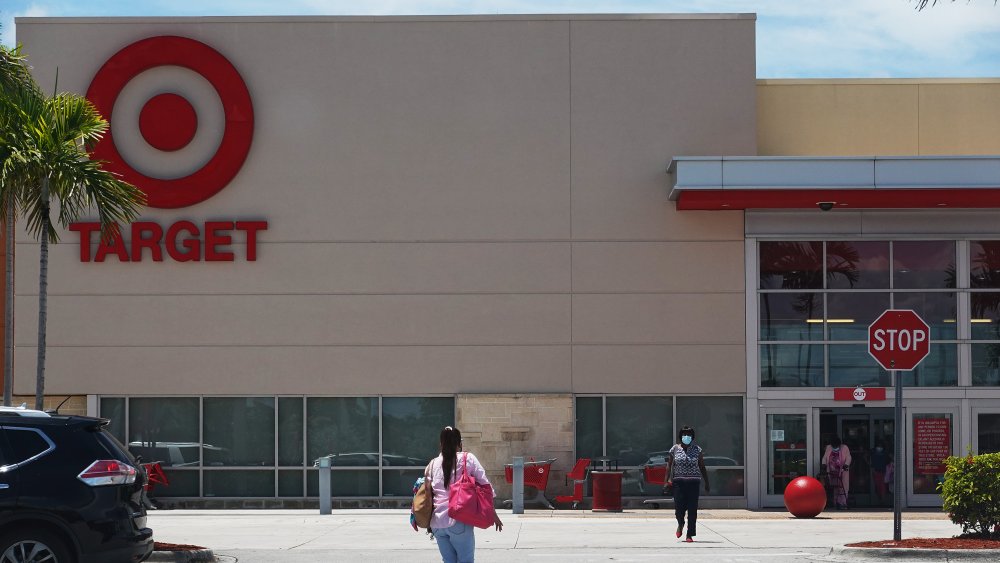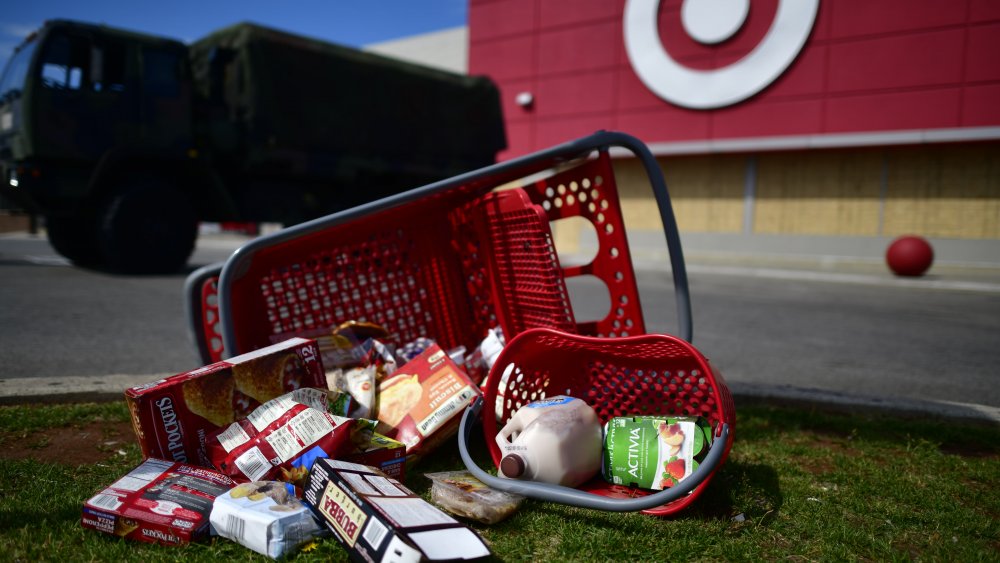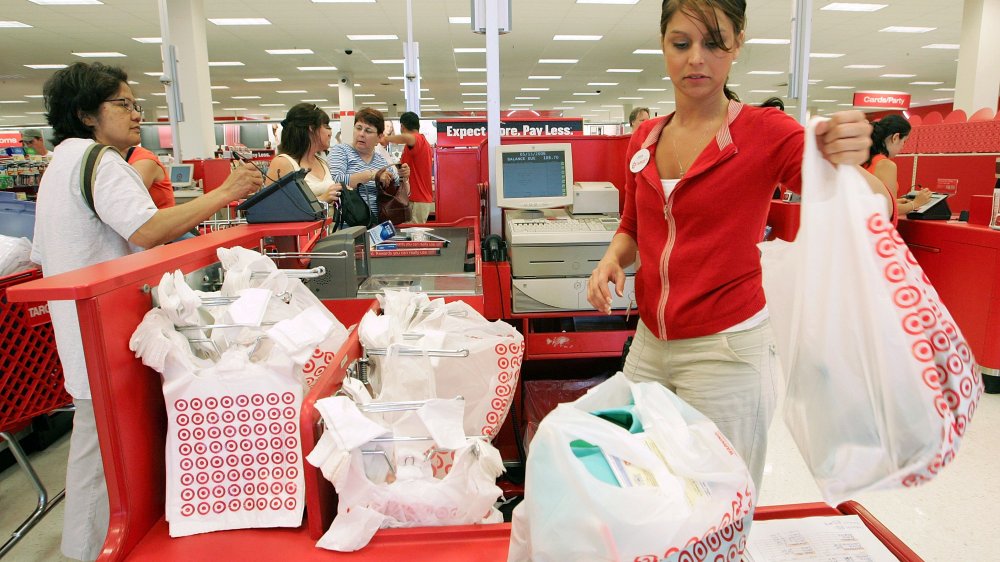Here's How Target Tricks You Into Buying More Food
We may receive a commission on purchases made from links.
We've all been there; we headed into Target looking for a few essentials and found ourselves checking out over an hour later with a cart full of things we didn't plan to buy. It's such a common phenomenon that you'll find articles and memes galore detailing this relatable experience, but if you're wondering what causes this "Target effect," the answer has to do with psychology.
According to Tom Meyvis, a professor of marketing at New York University's Stern School of Business, the first trick employed by Target to suck you in lies in how they display the massive variety of items for sale (via Refinery29). For example, by placing hot sauce next to Pepto Bismol, customers shopping for one are more likely to leave with both. This process is called cross-selling, and it's surprisingly effective; so the next time you're at Target and not looking to over-stuff your pantry, keep an eye out for these clever but innocuous-looking pairings to ensure you're only purchasing what you really need. Of course, this is just one of the tricks in Target's bag.
How store design impacts the Target effect
The next sneaky strategy that causes us to get lost in Target for hours lies in the store design, and it starts the moment you walk in. If you're a fan of snagging a coffee from the food court at Target before starting your shopping, you're not alone. In fact, the coffee shop at the front is designed to welcome you in, while the high-demand seasonal sections are typically located in the back of the massive store, specifically to entice customers to walk all the way through (via Business Insider).
In fact, almost every aspect of the store's design has been thoughtfully constructed by experts to put shoppers in the mood to, well, shop. For example, bright colors are used to improve shoppers' overall mood, but they also trigger hunger, which is the reason most fast food restaurants use red and yellow for their logos (via Insider). This can cause customers to put more food in their shopping cart than they initially intended to buy. The result is clear in fan tweets about the store, like this one (via Twitter): "bored? go to target. hungry? go to target. depressed? go to target. stressed? go to target."
The price of the Target effect
Of course, bright colors and clever displays aren't enough to persuade someone to buy more than they can afford, which is where the final piece of the Target effect puzzle comes into play: "psychological pricing." Psychological pricing is a marketing strategy based on the idea that different prices have different psychological effects on customers than others (via Entrepreneur). For example, labeling items as $9.99 instead of $10 is proven to make customers feel like the item is on sale, or a good deal, even when it isn't, and experiments prove this strategy increases purchases (via The Atlantic). Other examples of psychological pricing include buy-one-get-one-free deals, and placing higher-priced items with lower-priced alternatives to give the customer the feeling of having a choice.
Target has taken this practice to the next level by marketing itself (very effectively) as a place to get good deals. Their website touts "unbeatable prices on the grocery essentials," and a quick search returns over 90 results for buy-one-get-one offers (via Target). In fact, most shoppers don't recognize Target as a discount store, but rather see it as a superstore that happens to be inexpensive (via Forbes). According to Meyvis, this reputation means that oftentimes shoppers aren't even looking at prices because they just assume everything is reasonably affordable. The result? A cart full of items that add up to a large price tag, but individually feel like great deals — in other words, the Target effect.


